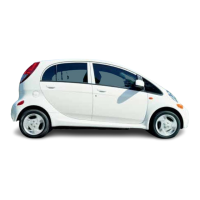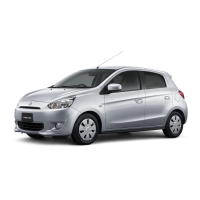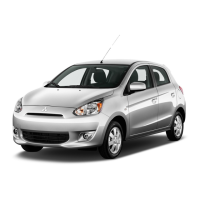Chapter 2 Part D General engine overhaul procedures
2D-29
Gap of lower
- No. 1 ring gap
side rail
c
Timing
belt .y
l-1
Gap of
upper
side rail
24.5 Position the ring gaps as shown here before installing the
piston/connecting rod assemblies in the engine
2 Remove the cap from the end of the number one connecting rod
(check the marks made during removal). Remove the original bearing in-
serts and wipe the bearing surfaces of the connecting rod and cap with a
clean, lint-free cloth. They must be kept spotlessly clean.
Connecting rod bearing oil clearance check
Note:
Don’t touch the faces of the new bearing inserts with your fingers.
Oil and acids from your skin can etch the bearings.
3 Clean the backside of the new upper bearing insert, then lay it in place
in the connecting rod. Make sure the tab on the bearing fits into the recess
in the rod. Don’t hammer the bearing insert into place and be very careful
not to nick or gouge the bearing face. Don’t lubricate the bearing at this
time.
4 Clean the back side of the other bearing insert and install it in the rod
cap. Again, make sure the tab on the bearing fits into the recess in the cap
(see illustration),
and don’t apply any lubricant. It’s critically important
that the mating surfaces of the bearing and connecting rod are perfectly
clean and oil free when they’re assembled.
5 Position the piston ring gaps at 120-degree intervals around the pis-
ton
(see illustration).
6
6 Slip a section of plastic or rubber hose over each connecting rod cap
bolt.
7 Lubricatethe piston and rings with clean engine oil and attach a piston
ring compressor to the piston. Leave the skirt protruding about l/4-inch to
“R” FORWARD FOR
CYLINDERS l-3-5
CYLINDERS 2-4-6
24.9b On the V6 engine, the proper letter must be positioned
towards the front of the engine (R for cylinders 1,3 and 5; L for
cylinders 2,4 and 6)
24.9a On four-cylinder engines, the arrow on the piston must
face the front of the engine
guide the piston into the cylinder. The rings must be compressed until
they’re flush with the piston.
8 Rotate the crankshaft until the number one connecting rod journal is
at BDC (bottom dead center) and apply a coat of engine oil to the cylinder
walls.
9 With the mark or notch on top of the piston facing the front of the en-
gine
(see illustrations),
gently insert the piston/connecting rod assembly
into the number one cylinder bore and rest the bottom edge of the ring
compressor on the engine block.
IO Tap the top edge of the ring compressor to make sure it’s contacting
the block around its entire circumference.
11 Gently tap on the top of the piston with the end of a wooden or plastic
hammer handle (see
illustration)
while guiding the end of the connecting
rod into place on the crankshaft journal. The piston rings may try to pop out
of the ring compressor just before entering the cylinder bore, so keep
some downward pressure on the ring compressor. Work slowly, and if any
resistance is felt as the piston enters the cylinder, stop immediately. Find
out what’s hanging up and fix it before proceeding. Do not, for any reason,
force the piston into the cylinder-you might break a ring and/or the piston.
12 Once the piston/connecting rod assembly is installed, the connecting
rod bearing oil clearance must be checked before the rod cap is perma-
nently bolted in place.
13 Cut a piece of the appropriate size Plastigage slightly shorter than the
width of the connecting rod bearing and lay it in place on the number one
--
24.11 Drive the piston gently into the cylinder bore with the
end of a wooden or plastic hammer handle

